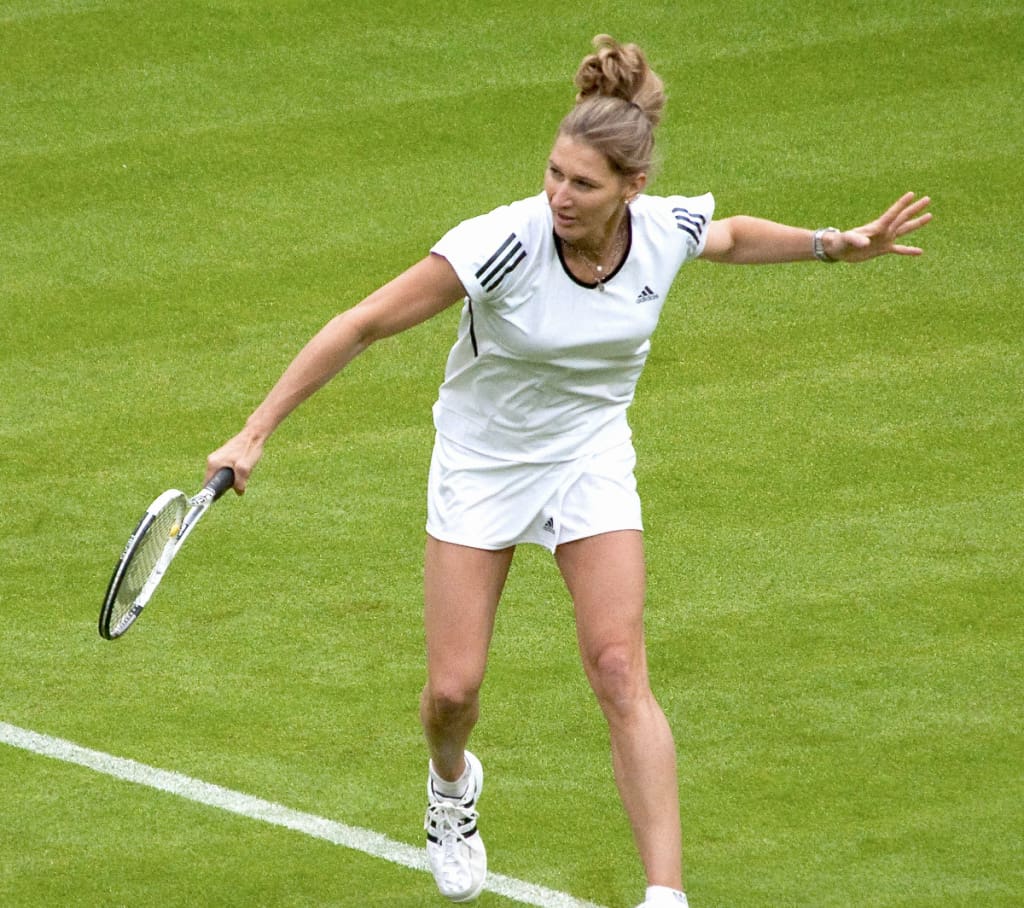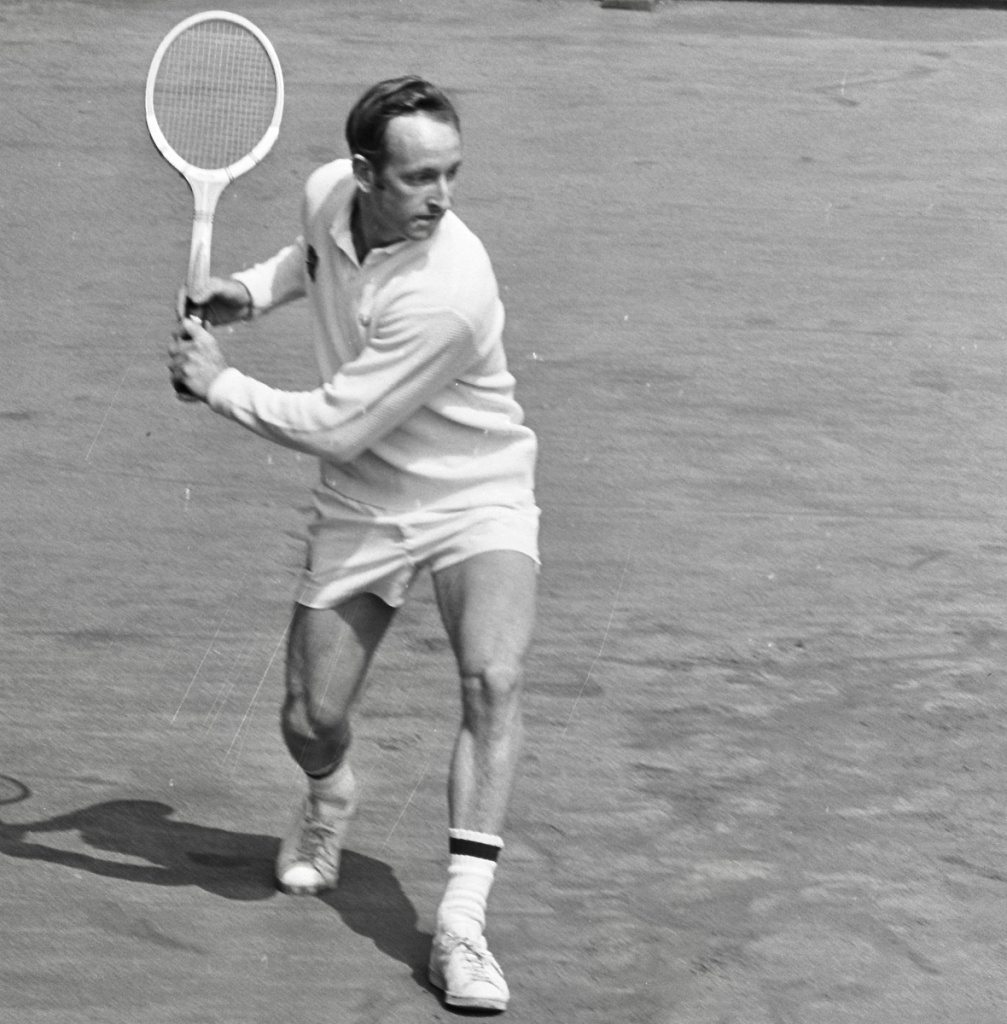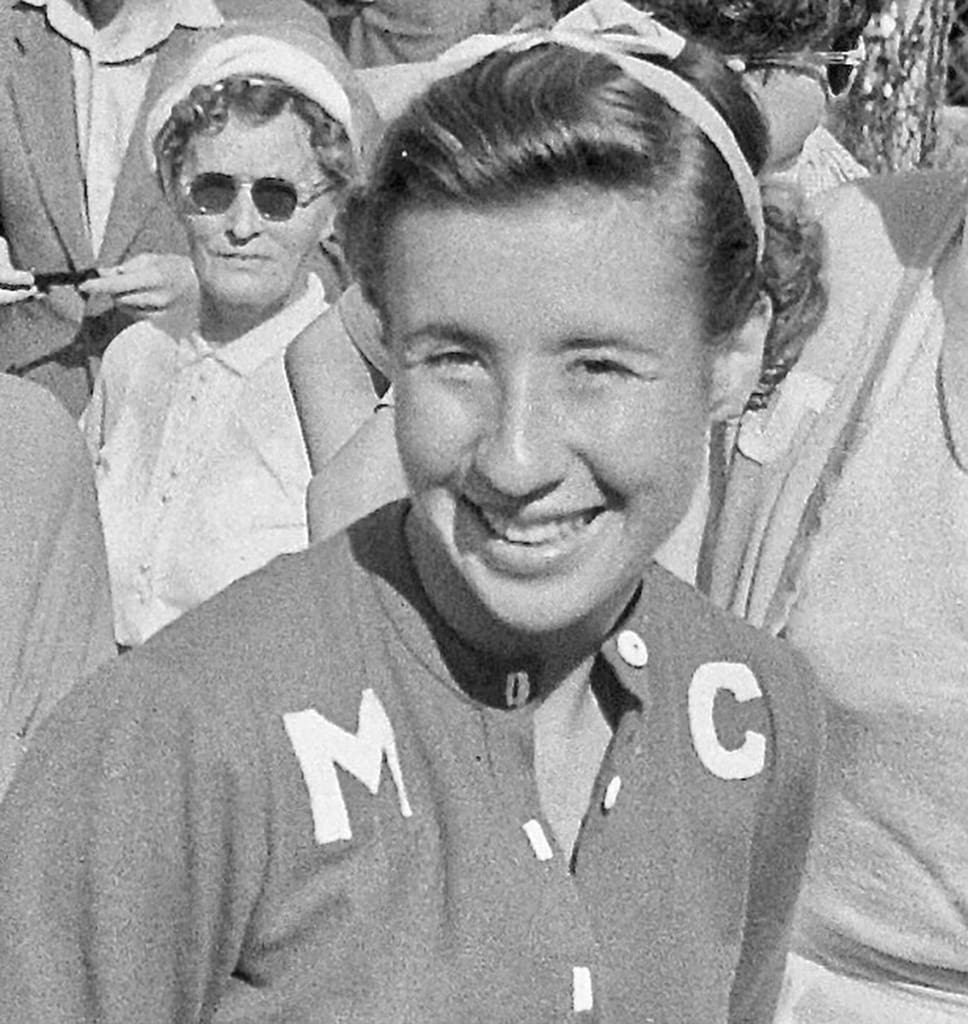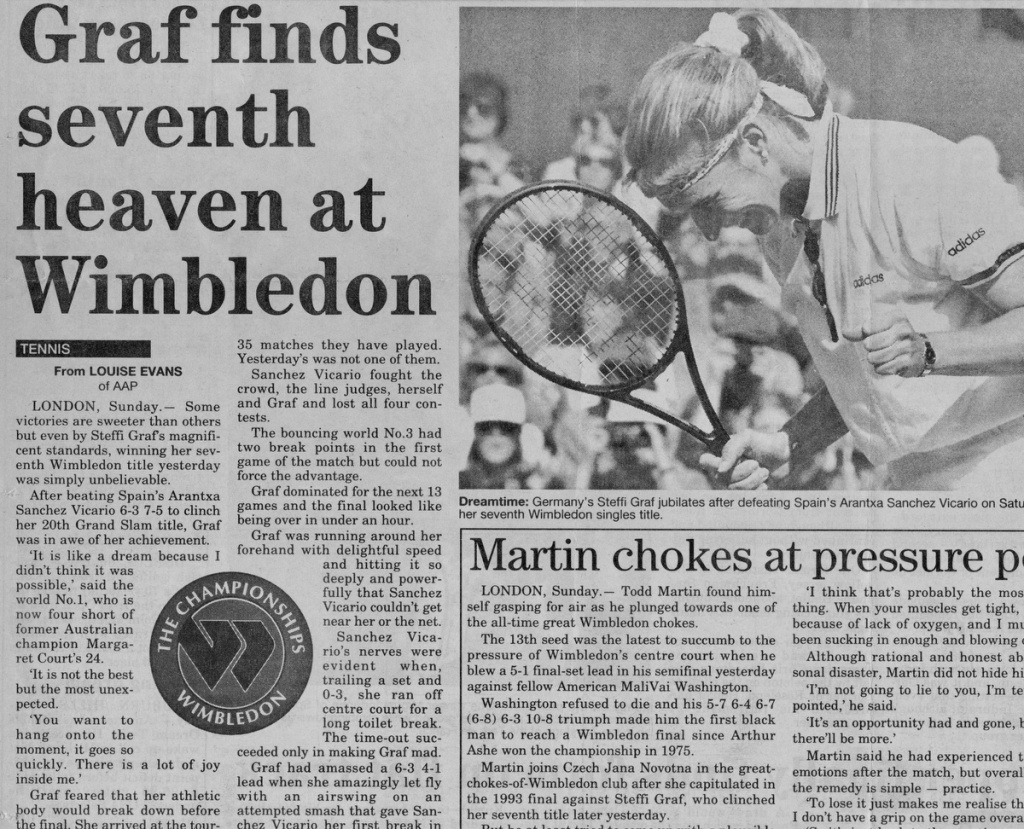Only five tennis legends have ever won a calendar Grand Slam and that long march to immortality begins again in Melbourne in less than two weeks, writes Senior Correspondent Mike Osborne.
Rocket Rod Laver climbed the mountain twice in the 1960s and fellow Australian Margaret Court-Smith reached the summit once in 1970, but no-one has triumphed since Steffi Graf’s golden 1988.
The Holy Grail of tennis, the calendar grand slam, has eluded legions of tennis champions over the past 90 years.
Despite the dominance and fierce desire of champions including Djokovic, Federer, Nadal, Navratilova and the Williams sisters, only two other players have claimed the grand slam of the Australian Open, Wimbledon, the French and US Open in the same year.

Californian Don Budge was the first to achieve the feat in 1938 and fellow American Maureen “Mo” Connolly became the first woman to go the distance in 1953.
The concept of the tennis “grand slam” emerged in 1933 after Jack Crawford from country NSW won the Australian, French and Wimbledon titles.
Crawford just needed to win the US Championships to hold all four major titles, which sports journalists started describing as a grand slam, a term borrowed from the card game Bridge – meaning to win all 13 tricks.
But Englishman Fred Perry beat Crawford in five sets at the US titles, only to suffer the same ignominy the following year when he too was denied the grand slam by failing to win the French Open.
Like Crawford and Perry, many other tennis legends have won three of the four titles in a single year – among them Novak Djokovic (four times), Roger Federer (three times), Monica Seles, Serena Williams and Helen Wills-Moody (twice each), Lew Hoad, Row Emerson, Jimmy Connors, Rafa Nadal, Billie Jean-King and Martina Navratilova (once each).
It makes Laver’s feat of claiming it twice – as an amateur in 1962 and a professional in 1969 – even more incredible. But the ever-modest Laver reckons it doesn’t elevate him above his peers.

“It was a thrill to come off the court knowing I had won all four majors in one year,” Laver said. “But I never felt like I was the best, never felt that way. I just happened to have a good year.”
Graf’s performance in 1988 was astonishing. Aged just 19 she won all four majors and the Olympic gold medal at the Seoul Games. Graf believes being a teenager helped her win the golden slam.
“I was 19 years old … I think it helped me a lot being young and kind of naive and not really being aware so much of the moment,” Graf said. Such was Graf’s world dominance that eight years later aged 27 she was still winning grand slam events, including her fifth French and US Opens and her seventh Wimbledon title in 1996.
The sheer volume of tournaments that now jam the tennis calendar and the need to maintain ranking points means it is becoming increasingly difficult for anyone to join the famous five.
Court summed-up the extreme difficulty of winning a grand slam saying: “In other years, I’d gotten the flu in the French or had an injury. Everything just has to be right in the one year. There’s many times you’d go so close and then you might miss one somewhere. To get the four of them, it’s not easy.”
Neither Laver nor Court started their grand slam run in Melbourne. Their 1962 and 1970 Australian titles were both held in Sydney’s eastern suburbs at the White City grass courts and the 1969 Australian Open was also held on grass at Brisbane’s Milton courts.
Even Budge’s 1938 grand slam started in Adelaide on grass at Memorial Drive, while Connolly’s 1953 grand slam began at Melbourne’s Kooyong grass courts.
Only Graf’s golden slam started on the hard courts at Melbourne Park, in the venue’s debut year after the Open moved from the grass at Kooyong to what was then Flinders Park.
First known as the Australasian Championships, the tournament started in 1905 as a men’s only event, with the first women’s competition included in 1922.

Initially it rotated through Melbourne, Sydney, Adelaide and Brisbane but was also played three times in Perth – at the city’s zoo in 1909 – and twice in New Zealand at Christchurch in 1906 and Hastings in 1912.
The tournament was not designated as a major championship by the International Lawn Tennis Federation until 1924, becoming the Australian Championships in 1927 and the Australian Open in 1969.
Only a few foreign players bothered to make the 45-day boat trip from Europe in the early days. Even some east coast Australian players were reluctant to travel the 3,000km to Perth and in 1906 only two Australians played at the Christchurch event.
Even when air travel made the journey quicker and easier, many of the sport’s big names shunned the Australian title including Bill Tilden, Rene Lacoste, Bobby Riggs, Jack Kramer and Pancho Gonzales. Ilie Nastase only came once, when he was 35, and Bjorn Borg rarely.
Another problem was the fluctuating dates, usually based on the venue’s prevailing climate and calendar. The 1919 tournament was held in Sydney in January 1920 and the 1920 tournament was played at Adelaide in March. The 1923 tournament in Brisbane was held in August.
In 1972 the tournament found a permanent home at Kooyong but the dates continued to shift. From 1982-85, the tournament was played in mid-December. Then it was decided to move the tournament permanently to mid-January, starting in January 1987, so there was no event at all in 1986.
While players still complain about the early start for the Australian Open – being so close to Christmas and New Year – most of the big names now make the pilgrimage.
Since 2004 when Federer won his first title, only five men have held the Norman Brookes Cup aloft – Djokovic (10 times), Federer (6) and Nadal (twice) while Russian Marit Safin (2005) and Swiss Stan Wawrinka (2014) have won once each.

In the women’s draw, Serena Williams has won seven times over the past 20 years, while Victoria Azarenka and Naomi Osaka have won twice each. The other years have been shared among some of the biggest names in the game including Maria Sharapova, Kim Clijsters, Caroline Wozniaki and Ash Barty, the first Australian to win the Australian Open in a quarter century.
When the Australian Open begins on January 14, on a Sunday and one day earlier than usual, players will walk on to Rod Laver and Margaret Court Arenas hoping to join the pantheon of champions and begin their own chase for an elusive grand slam.
Michael Osborne has been a journalist for more than four decades including 35 years with the national news agency Australian Associated Press, rising from junior reporter to Editor.
He was AAP Editor for 11 years and served four years as Head of Sport and Racing. He was also posted to London and Beijing as AAP’s Bureau Chief and Foreign Correspondent.
He has worked at six Olympics and five Commonwealth Games, covered tennis grand slams, golf majors, international cricket, rugby world cups and numerous sporting world championships. He also co-ordinated and managed AAP’s teams and coverage at three Olympic Games in Athens 2004, Beijing 2008 and London 2012.



Discussion about this post